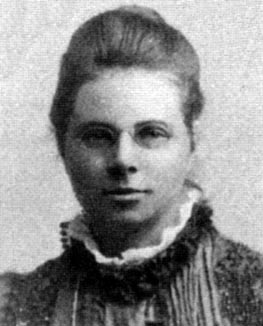Hilda Phoebe Hudson facts for kids
Quick facts for kids
Hilda Phoebe Hudson
|
|
|---|---|

Hilda Phoebe Hudson
|
|
| Born | 11 June 1881 Cambridge, England
|
| Died | 26 November 1965 Chiswick, London, England
|
| Nationality | British |
| Education | Cambridge and Berlin |
| Occupation | mathematician |
| Known for | Cremona transformation |
| Parent(s) | Professor William Henry Hoare Hudson |
Hilda Phoebe Hudson (born June 11, 1881, in Cambridge, England – died November 26, 1965, in London, England) was an important English mathematician. She focused on a special area of math called algebraic geometry. She was especially known for her work on Cremona transformations. Hudson also found connections between her mathematical studies and her religious beliefs.
Contents
Early Life and Education
In 1900, Hilda Hudson won a scholarship. This allowed her to attend Newnham College at the University of Cambridge. She graduated in 1903, doing very well in her studies. She was among the top students in her class.
After Cambridge, she spent a year studying more at the University of Berlin in Germany. She then returned to Newnham College in 1905. There, she first worked as a mathematics lecturer. Later, she became an Associate Research Fellow. Trinity College Dublin also gave her two special degrees. She received an MA in 1906 and a DSc in 1913.
Pioneering Achievements in Mathematics
Hilda Hudson made history in 1912. She was invited to speak at the International Congress of Mathematicians (ICM) in Cambridge, UK. This was a very big deal for mathematicians. Although another woman, Laura Pisati, had been invited before, she passed away. This meant Hilda Hudson became the first woman ever to speak at an ICM.
From 1912 to 1913, she taught at Bryn Mawr College in the United States. She then came back to England. From 1913 to 1917, she was a lecturer at the West Ham Technical Institute.
Work in Engineering and Public Service
During World War I, Hilda Hudson joined a special group in 1917. This group was part of the Air Ministry. They did research in aeronautical engineering. This meant they studied how to design and build aircraft. Hudson used her math skills to create mathematical models. These models helped in designing better airplanes.
Because of her important work, she was given a special award. She was appointed OBE in 1919. This award recognizes great service to the country. As a respected mathematician, she also served on the council of the London Mathematical Society. This was rare for women at that time.
Mathematical Research and Publications
Most of Hilda Hudson's own math research was about shapes. She studied surfaces and flat curves. She was especially interested in Cremona transformations. These are special ways to change geometric shapes.
In 1916, she wrote a book called Ruler and Compasses. People liked this book because it connected basic math with more advanced ideas. Her biggest work was a 454-page book from 1927. It was called Cremona Transformations in Plane and Space. Many experts, like John Greenlees Semple, consider this her most important book.
Contributions to Understanding Disease
Hilda Hudson also worked with a scientist named Ronald Ross. They studied how diseases spread. This field is called epidemiology. Their work helped measure how quickly illnesses move through a population.
They helped create a very important idea called the SIR model. SIR stands for Susceptible, Infectious, and Recovered. This model helps explain how diseases like the flu spread. It shows how people who can get sick (susceptible) become sick (infectious) and then get better (recovered). Their early work was key for understanding how to control outbreaks.
Books
- Ruler and Compasses, first published as a monograph (Longman's Modern Mathematical Series, 1916) and then included in the compendium Squaring the circle and other monographs (Chelsea n.d.)
- Cremona Transformations in Plane and Space, Cambridge University Press, 1927.

